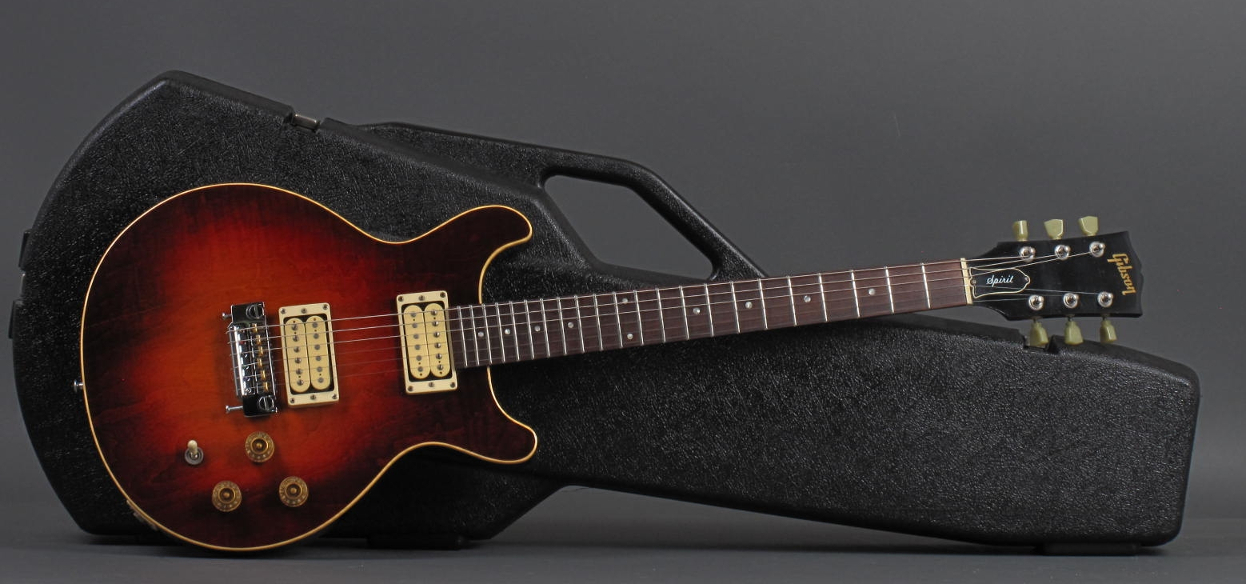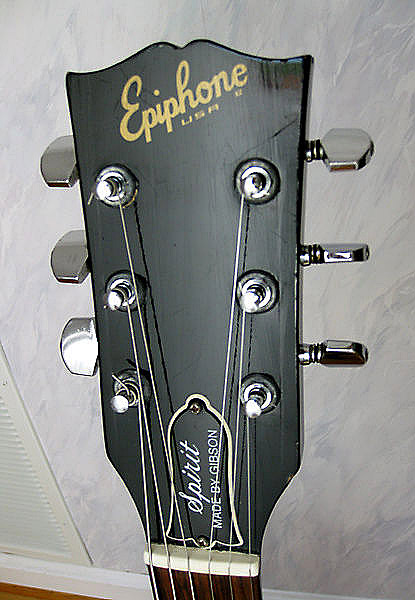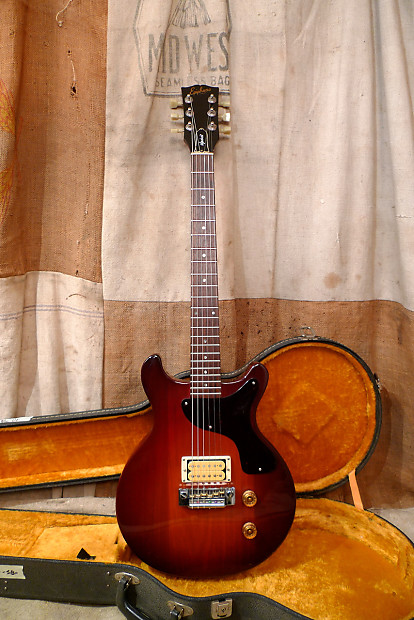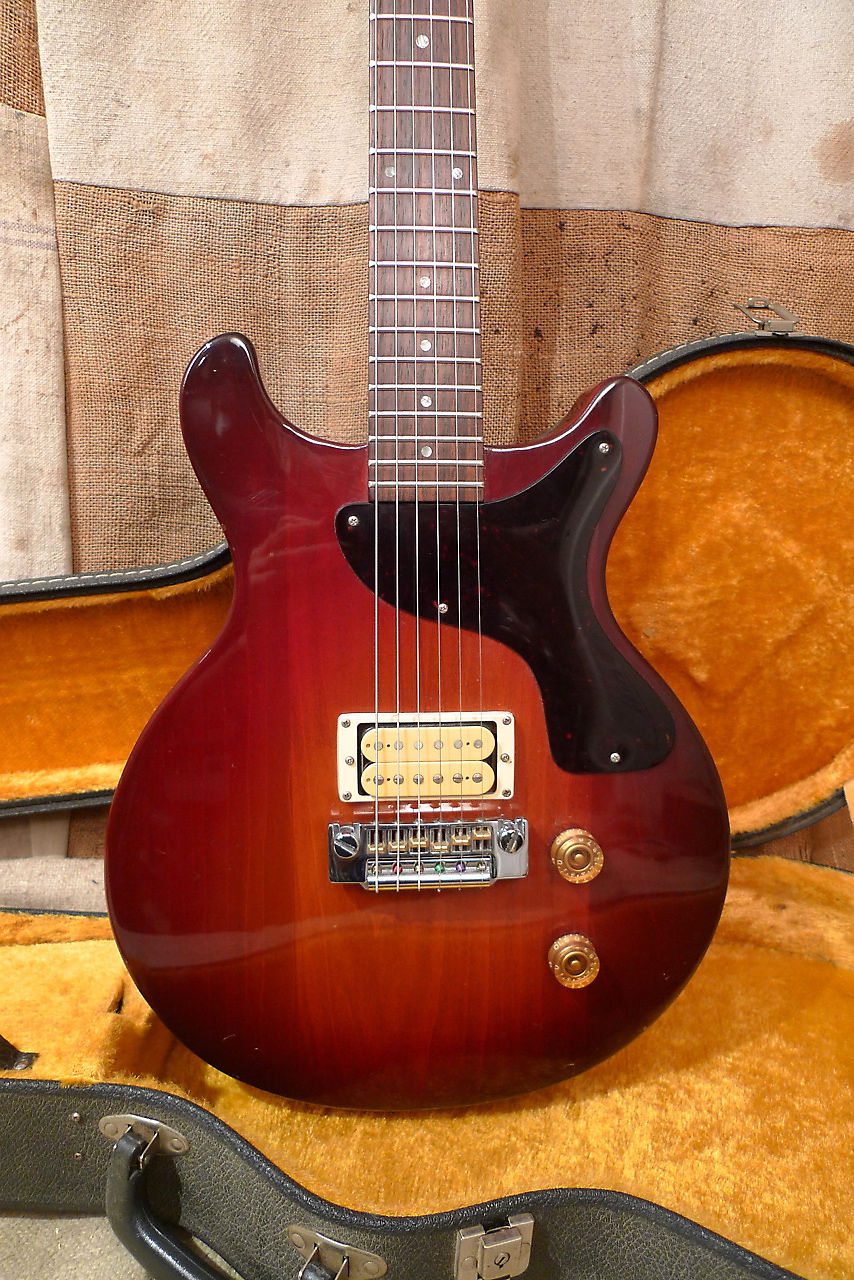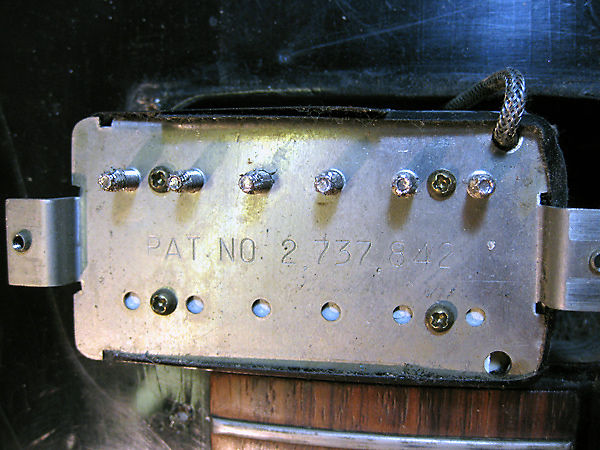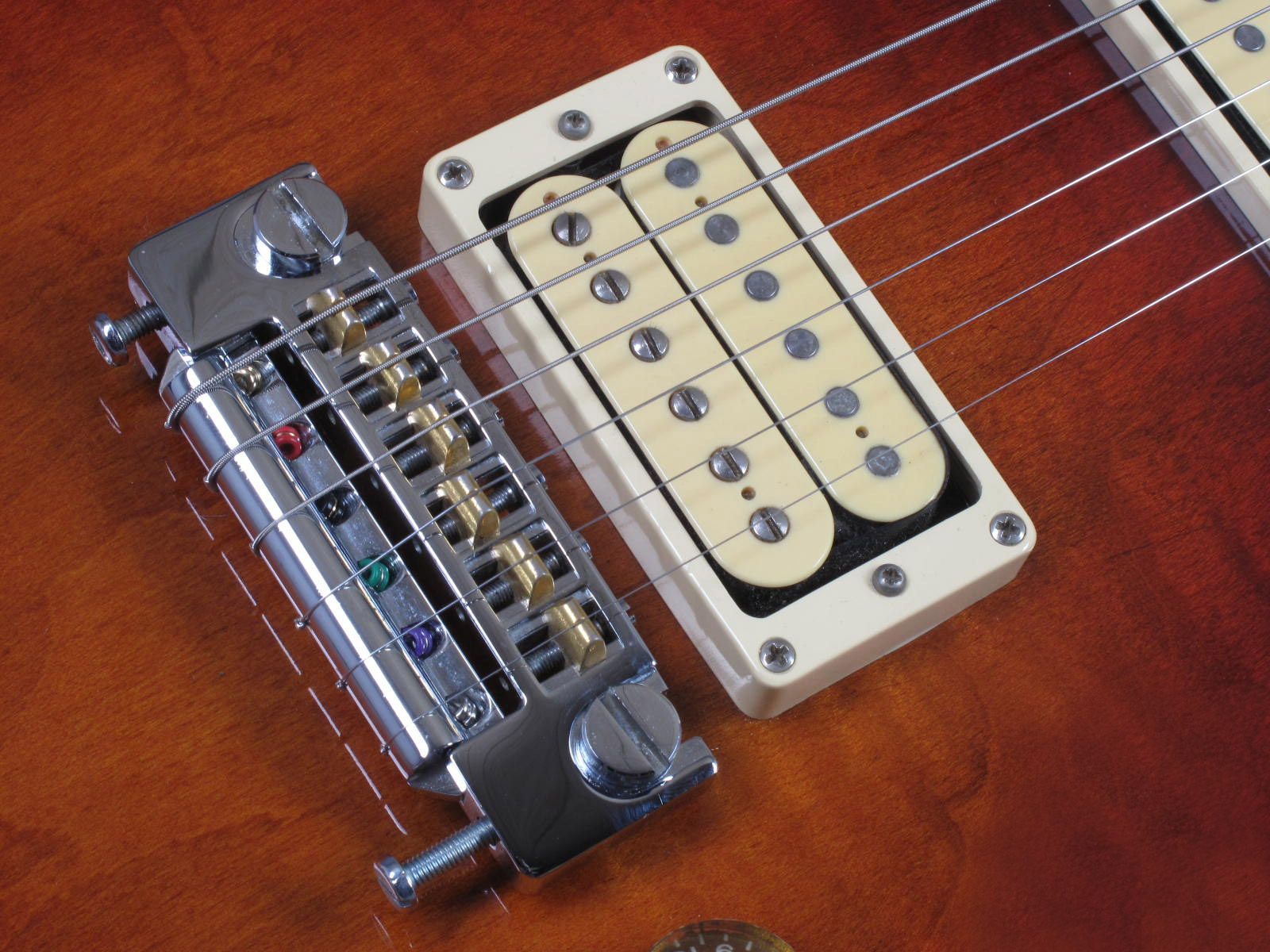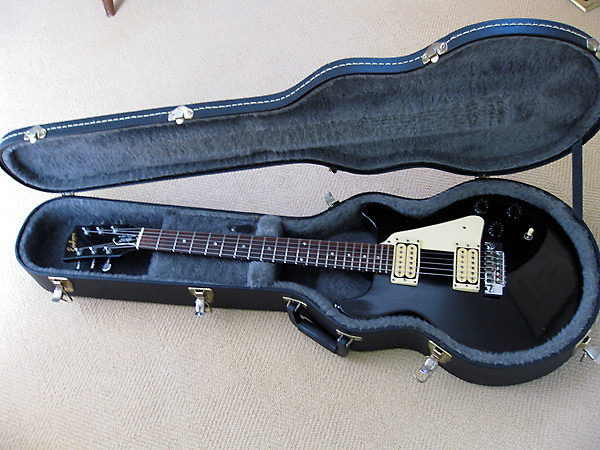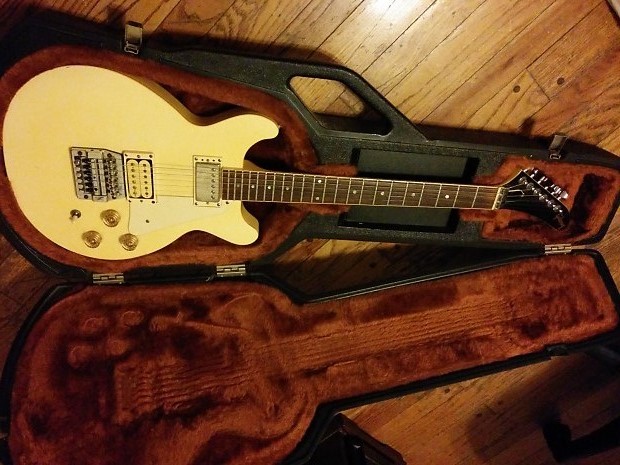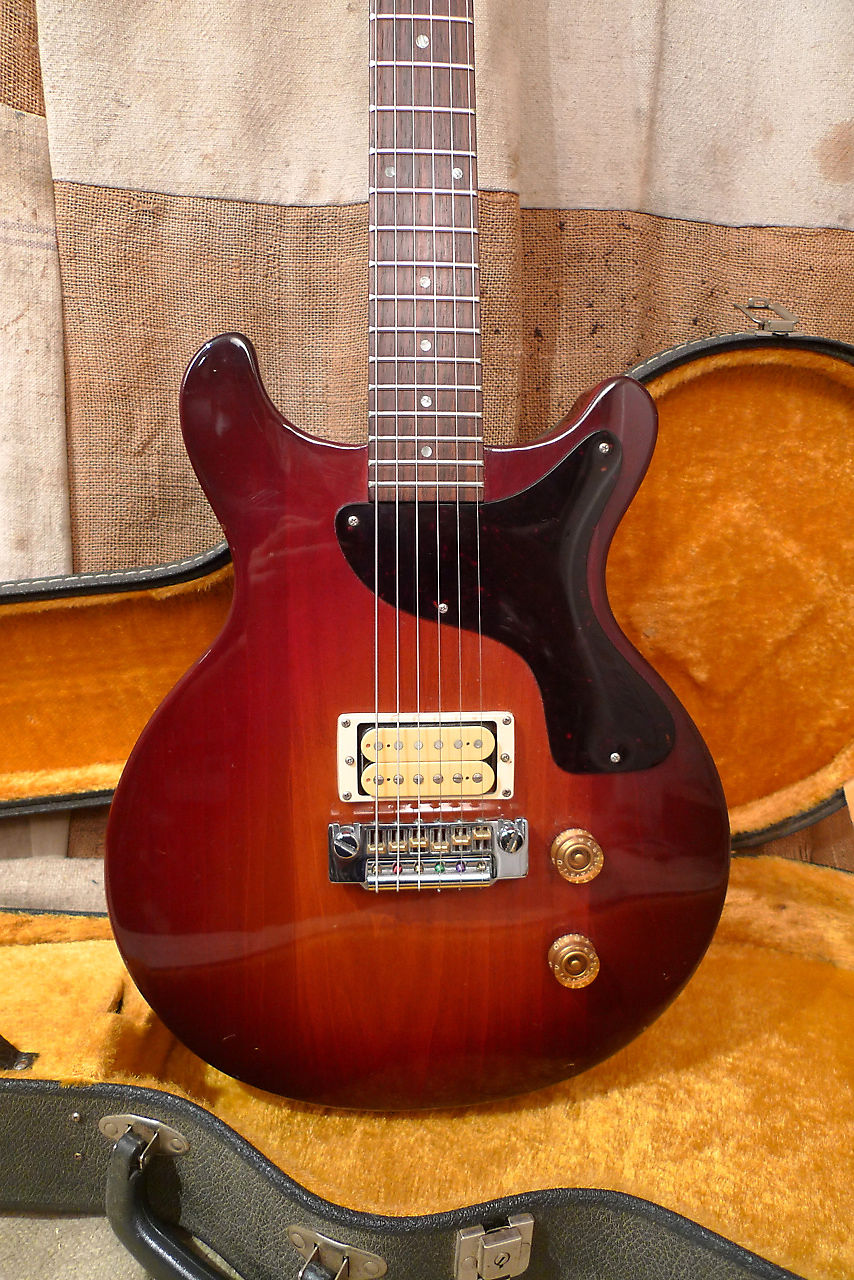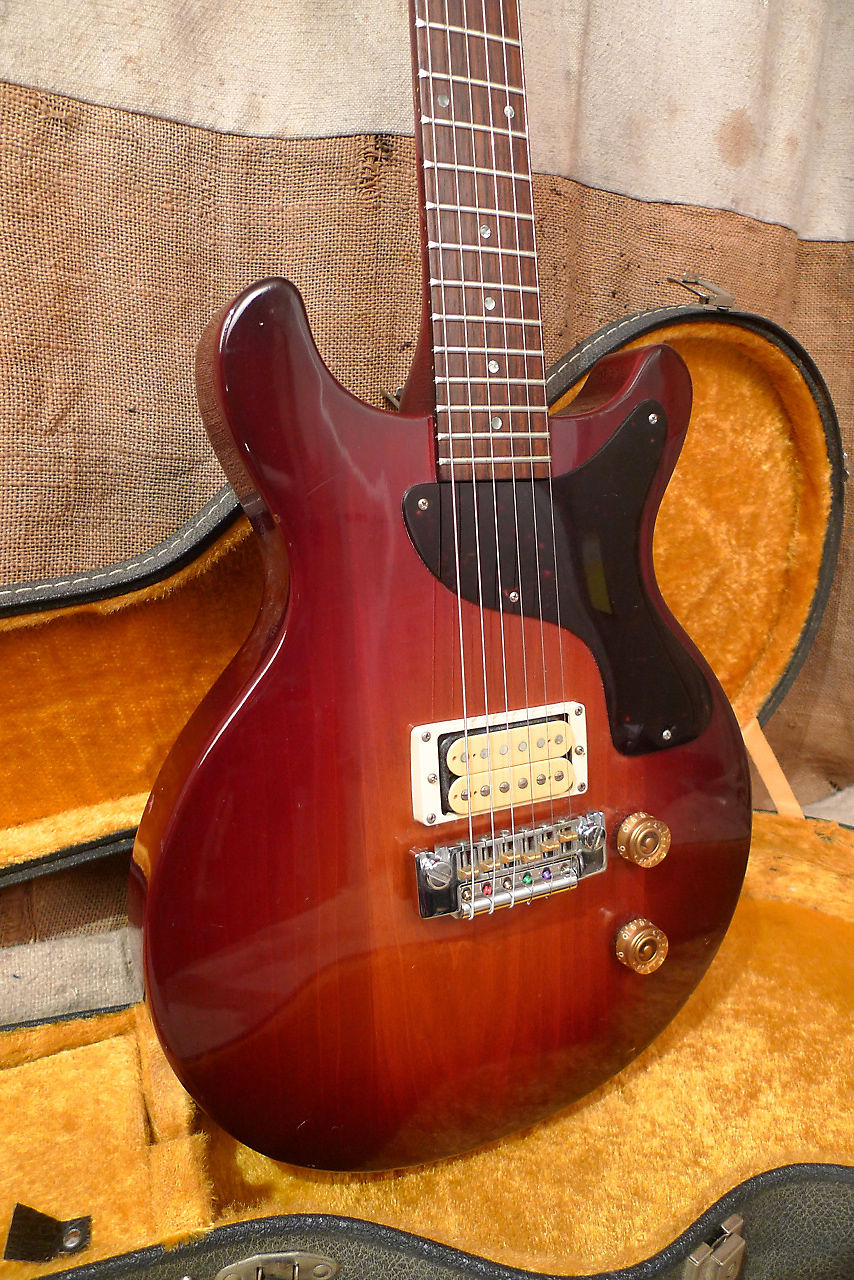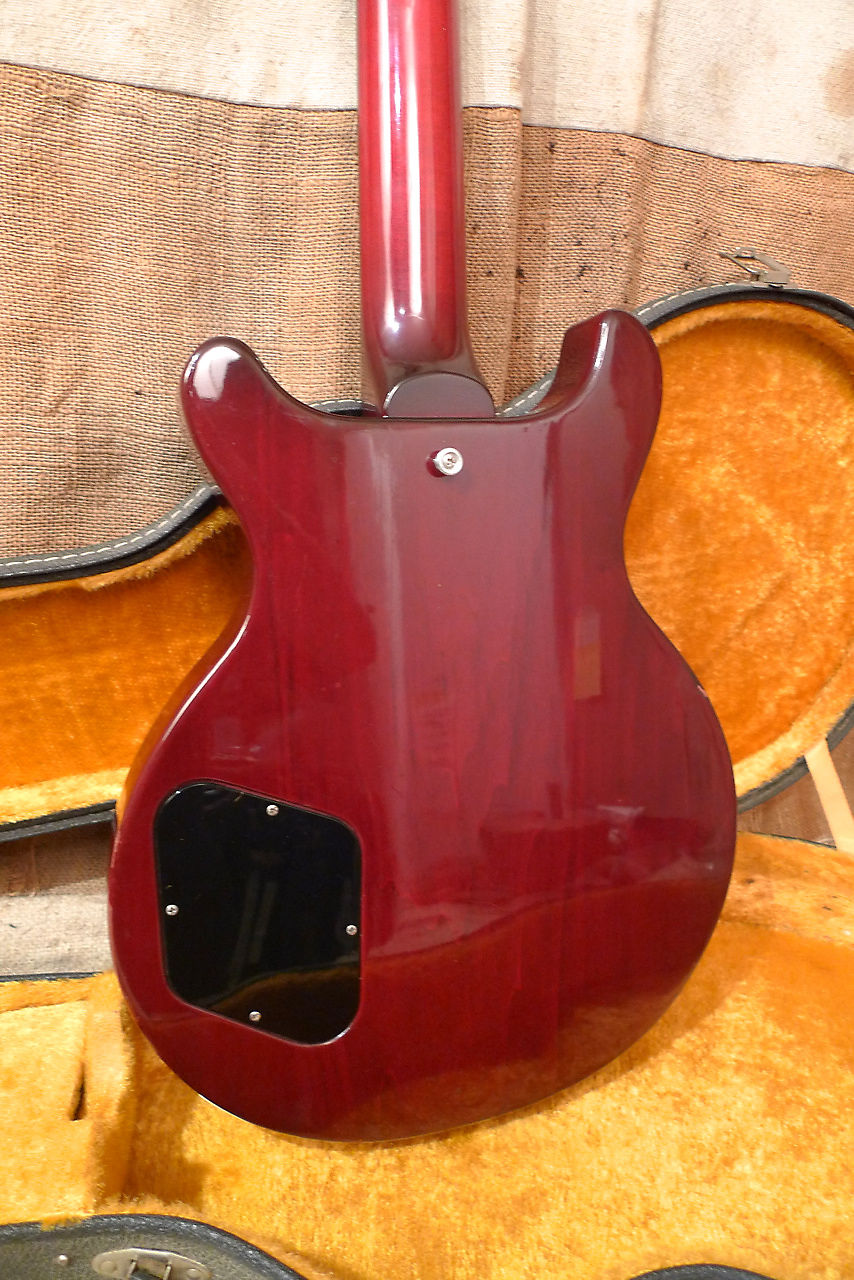..
”With the coming of the 80s, Gibson had to try every way to arise from a very poor decade, in which it had considerably lost its appeal and market in favor of the now well-known high-quality copies manufactured in the rising sun. The man of providence was the now-famous Tim Shaw, who had to collect a heavy inheritance, with all the problems that derived from it and, to be honest, he did an outstanding job bringing the quality back to good old times, presenting excellent ideas like the excellent reissue of the 1959 PAF humbuckers.So The Spirit was born.
Lorenzo
The Spirit was a guitar based on the Les Paul Double Cut Junior and Special and was initially manufactured between 1982 and 1983 in the historic Kalamazoo plant under the Epiphone brand and then moved to Nashville and been then marketed as Gibson until 1986, year in which its production has been stopped.
However, due to poor sales, some of the Epiphone-branded instruments were also rebranded to Gibson and for this reason a slight trace of the original branding can still be glimpsed, under the Gibson lettering, in those guitars.
The biggest difference, compared to the models from which it was inspired, is the insertion of the neck at the twentieth fret instead of the twenty-second fret as on the DC Junior and Special.
All Spirits have been very simply built to be “stage” guitars, with a flat top, glued neck with dot markers and one (Spirit I) or two humbuckers (Spirit II), reissues of the 1959 Gibson (later nicknamed Tim Shaw Humbuckers).
The Epiphone truss rod cover bears the wording “Spirit Made By Gibson” while in Gibson branded instruments we find only “Spirit”. The tuners are the typical Kluson Tulip but in some cases you can find Schallers or Grovers.
The bridges are almost exclusively Schaller 455, a combination of individually adjustable saddles and a wraparound bridge.
The woods differ, ranging from the poplar body and maple neck of the early models to the alder and mahogany of the following productions, some with a flamed or tiger maple top and a sunburst or transparent finish while others have a solid nitro paint finish.
The main difference between the Spirit I and the II are the number of pickups, the color (being more often plain in the I and suburst more common in the II, even if in the images above we also have the typical exception that confirms the rule) the number of controls and the pickguard, almost always present on the Spirit I and definitely absent in the II (one it has probably been added to the black Spirit II in the images, perhaps being a prototype). While the Model I is inspired by a Junior and therefore consists of only one volume and one tone, the Spirit II has a volume for each pickup, a shared tone control and a classic Gibson selector.
“Spirit XPL”
A peculiar kind of Spirit, the XPL, was produced from 1985 to 1986 with an Explorer inspired headstock and a Kahler Flyer tremolo, as an obvious intention to get Gibson into the metal rock Super Strat market. This model of Spirit is very hard to find and even harder is the SR-71 version, with a bolt on neck and a Floyd Rose bridge, an humbucker-single-single configuration and a definitely more strat style shape.
Quite rare instrument, has Chris Hayes of Huey Lewis & The News among his admirers, who owned and played some of them at least until the early 90s (I remember him playing extensively an XPL on the Italian leg of the Small World Tour), the Spirit is actually a great guitar with great sounds, very light and extremely versatile, with the Shaw pickups that never feel you the need of single coils, as they are extremely clean and dynamic, in good memory of the original PAFs.
In conclusion, this is the classic vintage instrument that is still “dormant” but which, thanks also to the reborn love for the Les Paul Double Cut, is already proving to be an excellent investment that will be further evaluated in the very near future.
Some Spirit demoes

